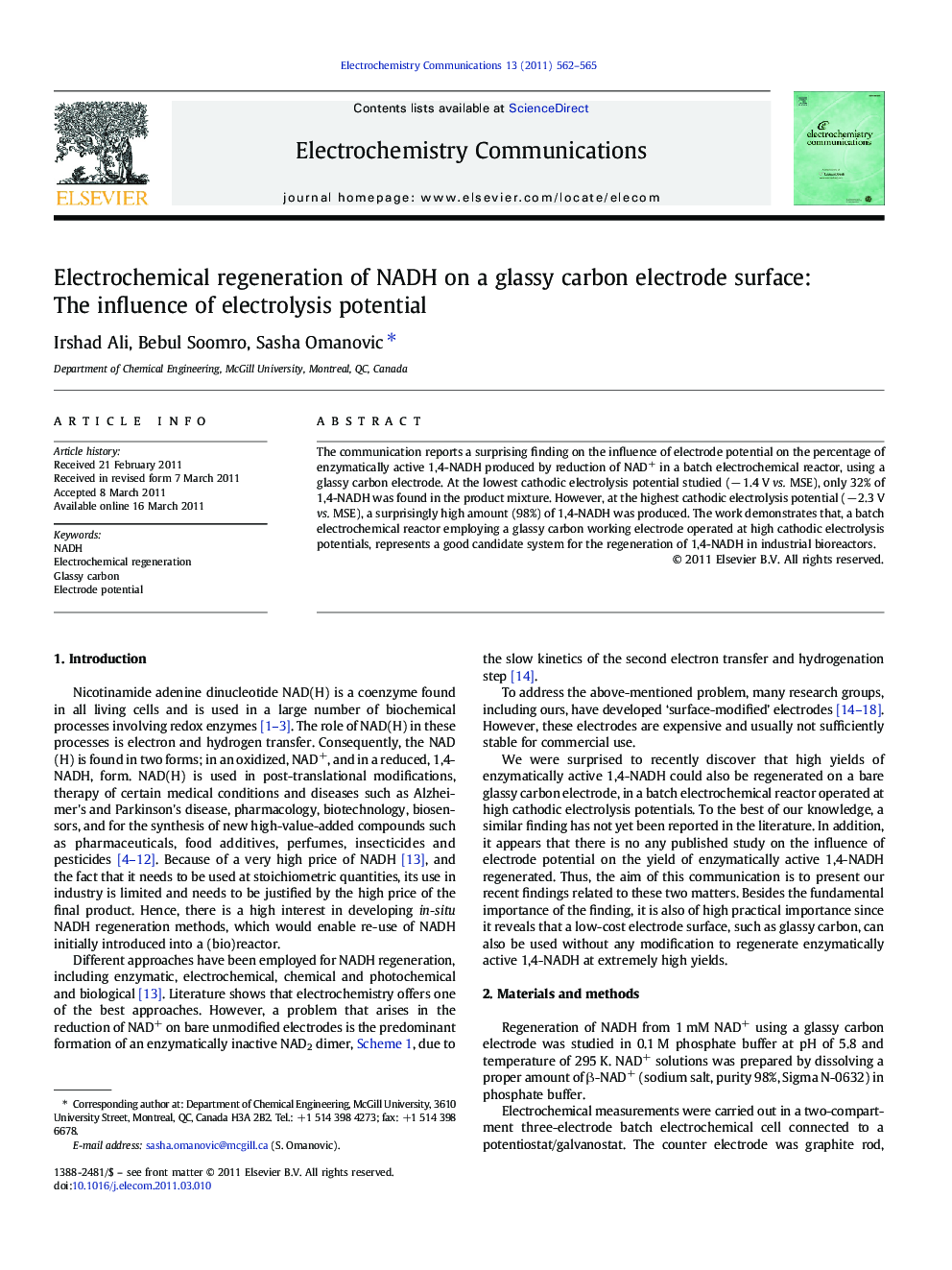| Article ID | Journal | Published Year | Pages | File Type |
|---|---|---|---|---|
| 180312 | Electrochemistry Communications | 2011 | 4 Pages |
The communication reports a surprising finding on the influence of electrode potential on the percentage of enzymatically active 1,4-NADH produced by reduction of NAD+ in a batch electrochemical reactor, using a glassy carbon electrode. At the lowest cathodic electrolysis potential studied (− 1.4 V vs. MSE), only 32% of 1,4-NADH was found in the product mixture. However, at the highest cathodic electrolysis potential (− 2.3 V vs. MSE), a surprisingly high amount (98%) of 1,4-NADH was produced. The work demonstrates that, a batch electrochemical reactor employing a glassy carbon working electrode operated at high cathodic electrolysis potentials, represents a good candidate system for the regeneration of 1,4-NADH in industrial bioreactors.
Research highlights► Regeneration of 1,4-NADH from NAD+ on a glassy carbon electrode was performed. ► The influence of electrode potential on the % of produced 1,4-NADH was studied. ► A surprising evidence of the influence of electrode potential was found. ► At the lowest overpotential, 32% of 1,4-NADH in the product mixture was found. ► At the highest overpotential, surprising 98% of 1,4-NADH was produced.
